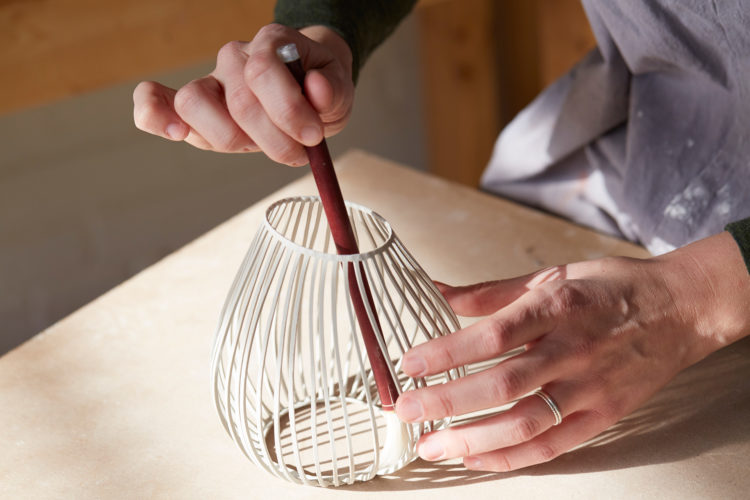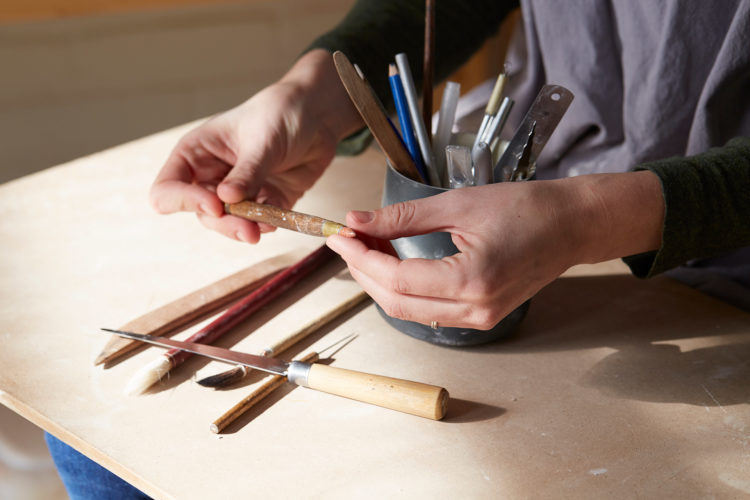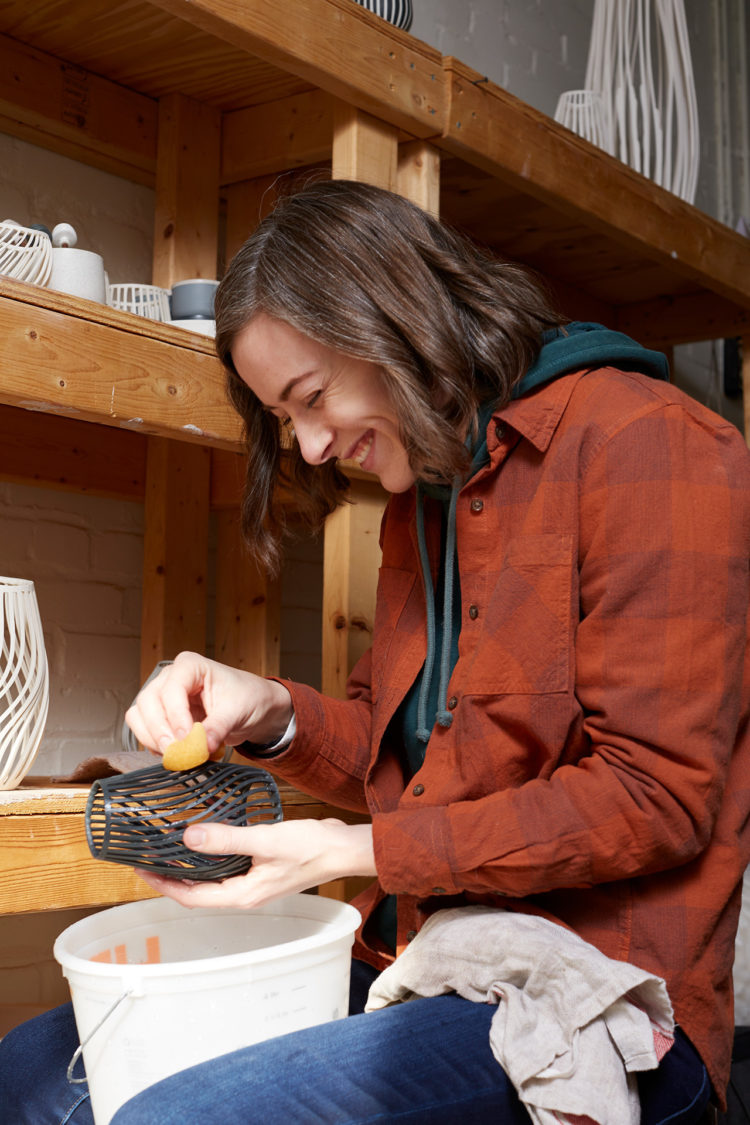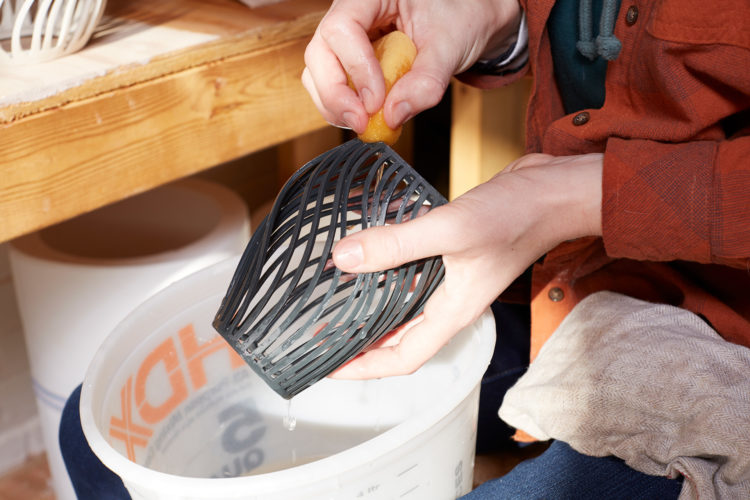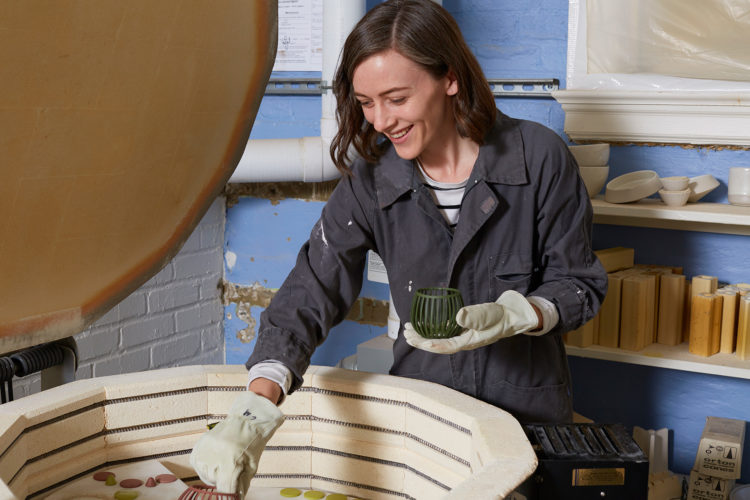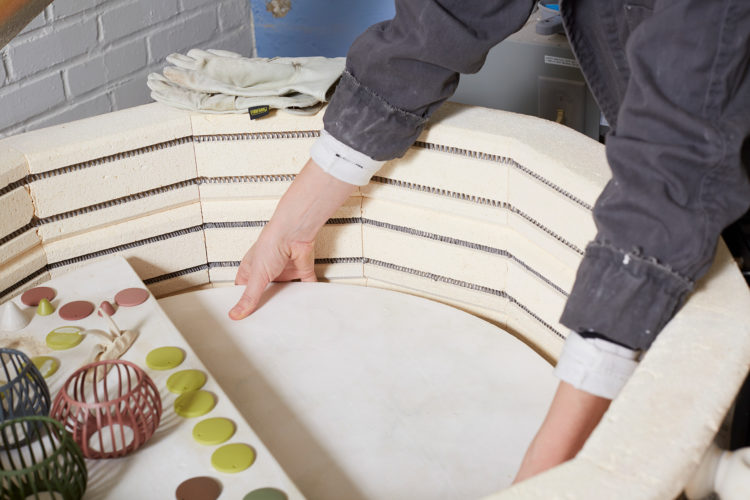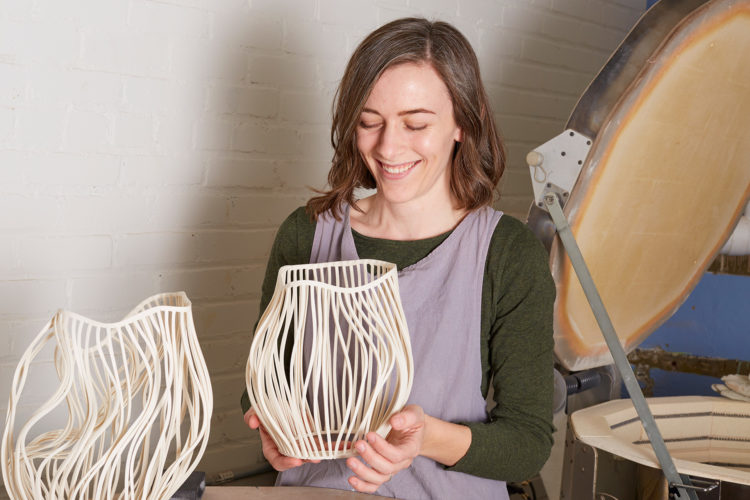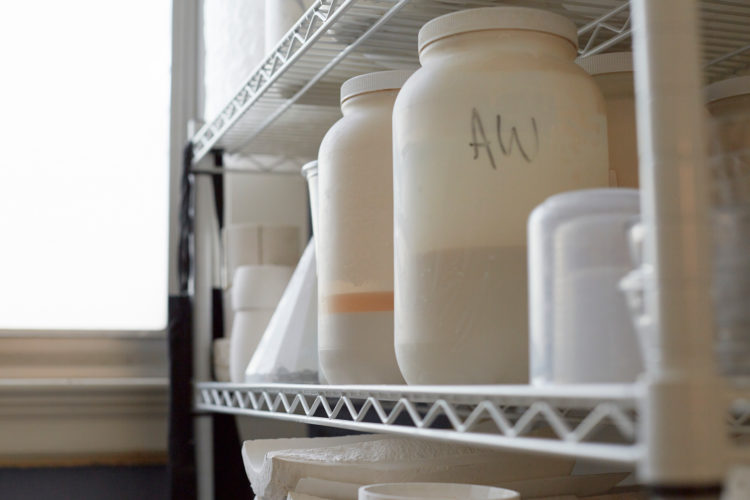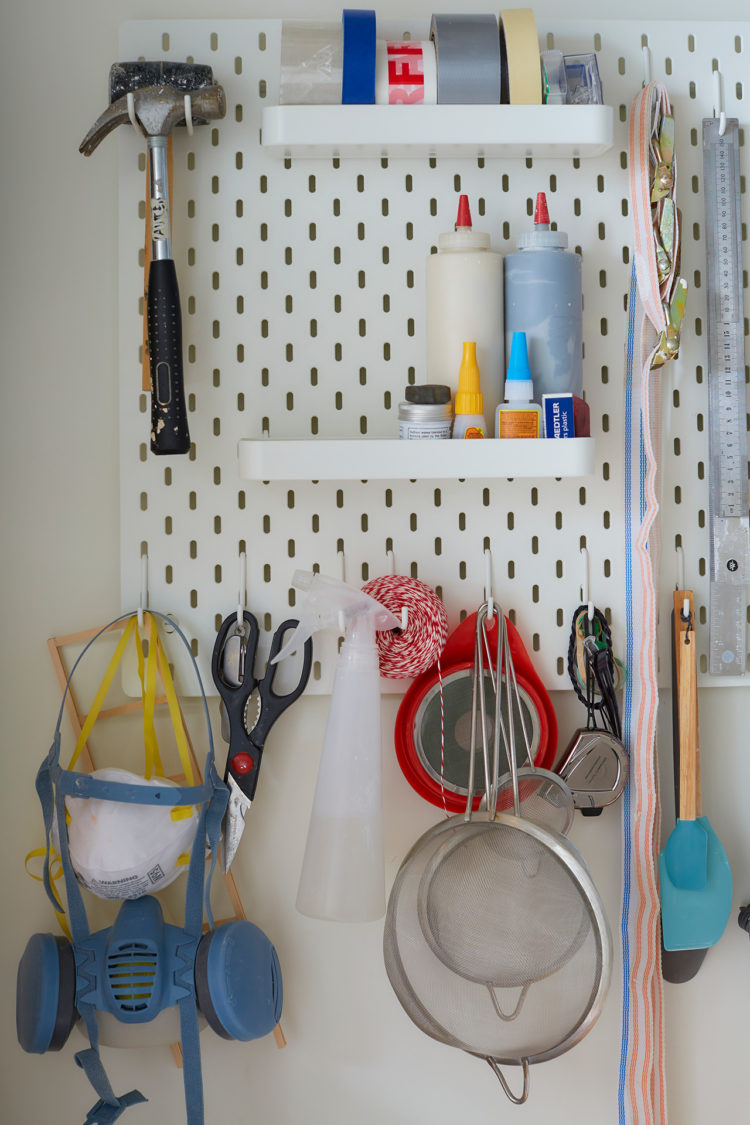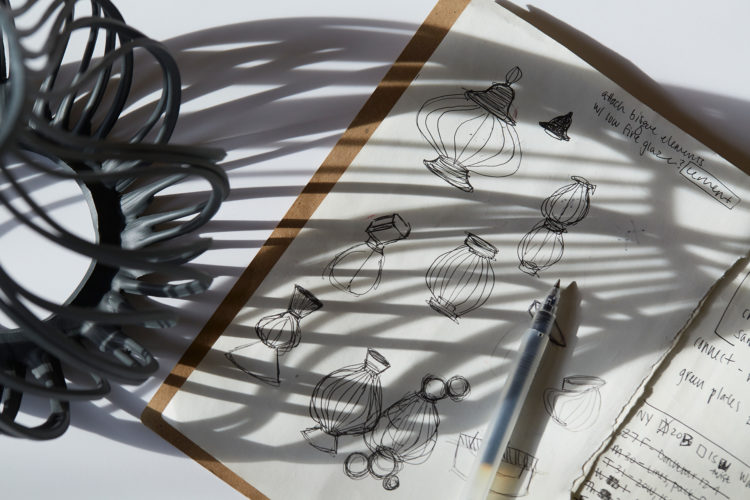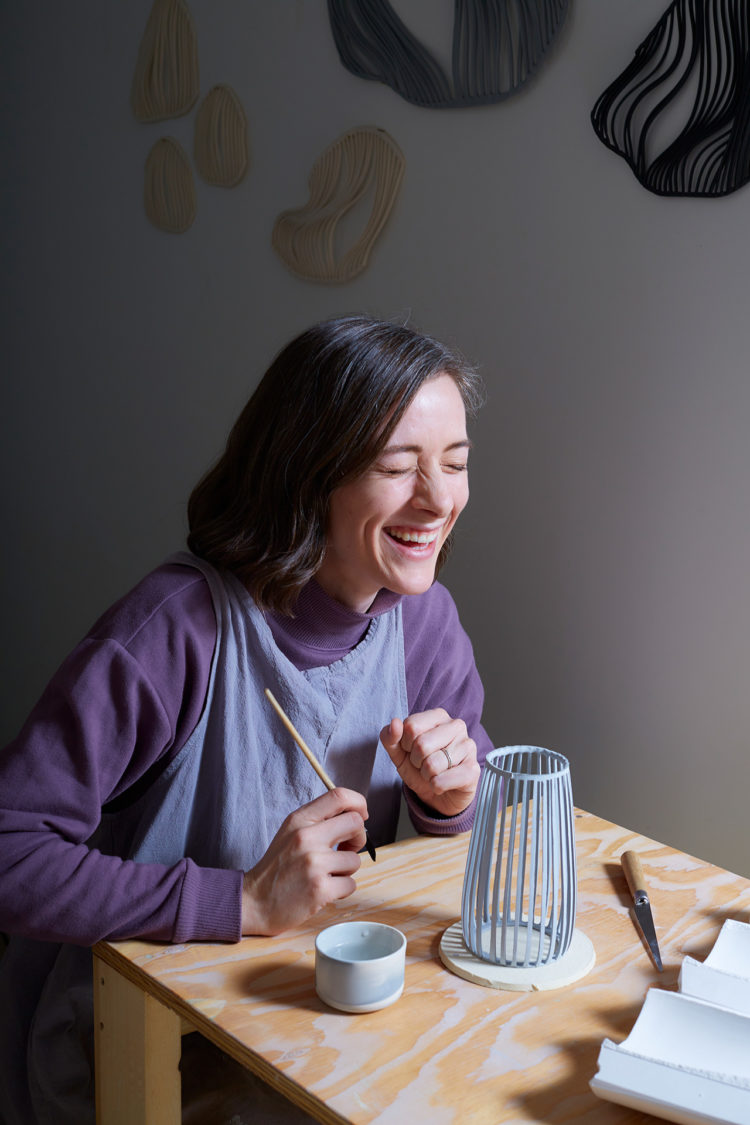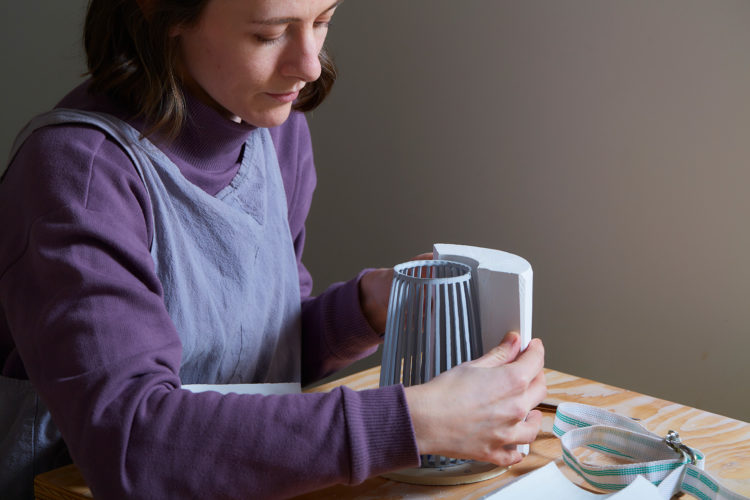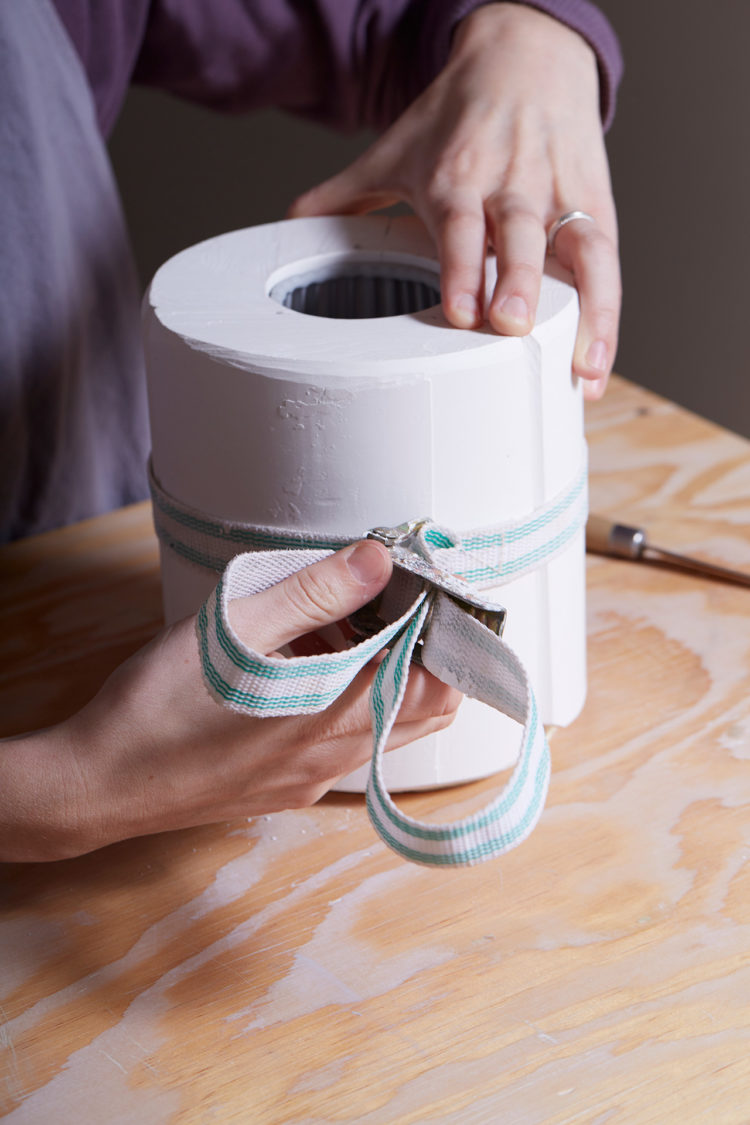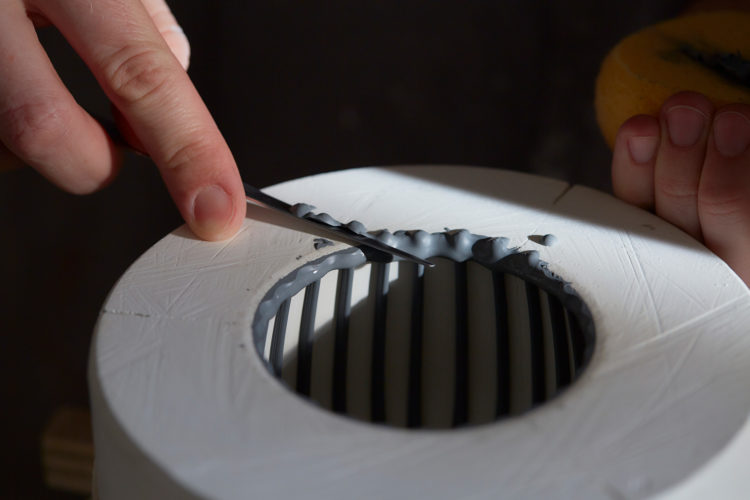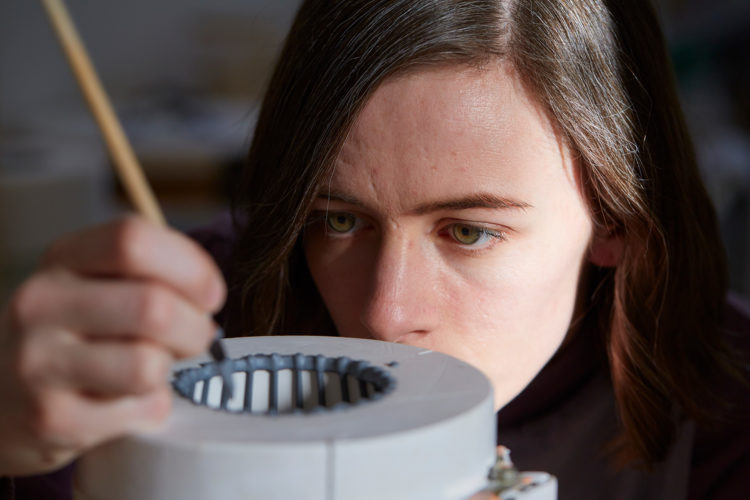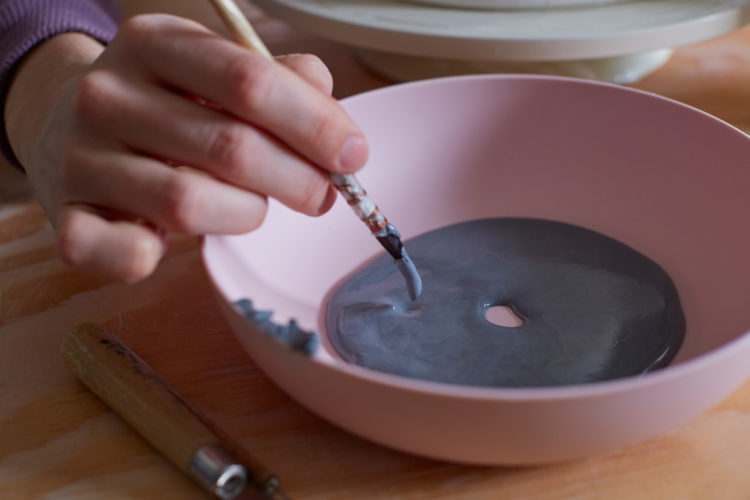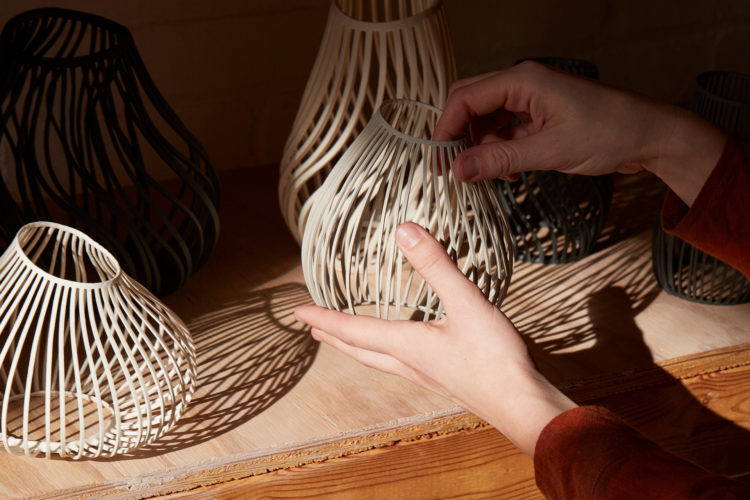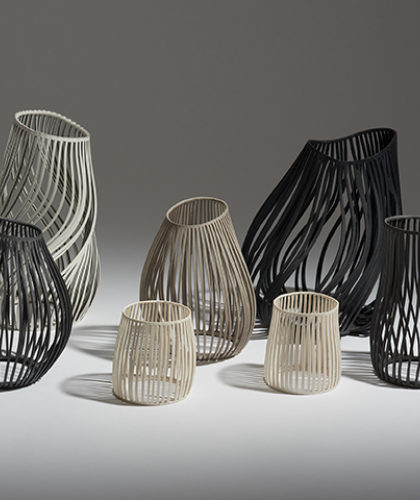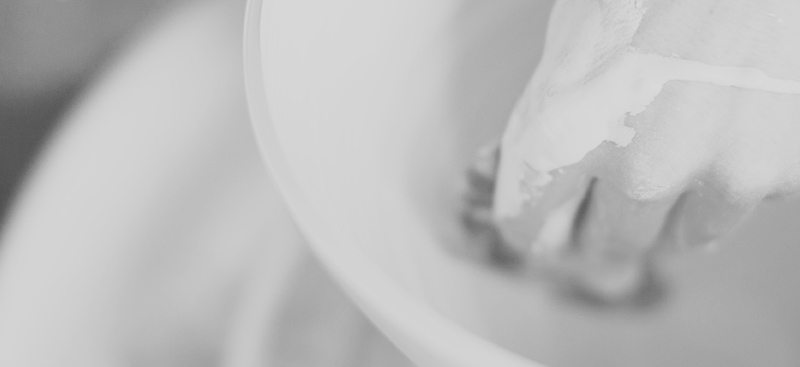Lauren Nauman
Ceramicist
With her final degree show at London’s RCA looming, Lauren Nauman was still experimenting with a new direction in her ceramics.
She had been designing and creating tableware when she went to a design fair in Frankfurt, ostensibly to look at new tableware and get ideas. But she was drawn to a display of wire baskets and decided to explore mimicking them in clay. Her early experiments were not promising, with the clay collapsing or breaking in the kiln. ‘My tutor was beginning to panic with the show getting closer and with me having nothing worth showing,’ she remembers. ‘There were many, many failed experiments and my tutor kept telling me to stop and to try something different. But I could see something in what I was doing – and when one vessel broke open and became bulbous in the firing, it triggered my imagination. I was determined to find a way to make it happen.’ She eventually hit upon a process that worked – using plaster moulds and slip-casting, she created cylindrical cages of wet clay which, in the kiln, moved and warped into unique and wonderful shapes. The show was saved.

Since returning to her home, Boston, she has continued to experiment with these forms. The process is fairly straightforward, but isn’t always successful. ‘Not all of the pieces make it. Usually I make multiple pieces to get just one that works. I never know what I’m going to see when I open the kiln.’ It is the pyro-plasticity of the clay which causes it to shift and move in the heat of the kiln so it is down to gravity and chance how the eventual shape of the vessel will settle. ‘I don’t decide the final form – they move on their own behind the kiln door,’ she says, ‘and the bigger the vessel, the more movement it will have.’ The fluidity of the clay remains in the vessel like a memory, even though the fired form is rigid and surprisingly strong.
She doesn’t glaze her Lines vessels, but instead uses different coloured clays. The resulting palette is earthy and muted – putty, charcoal, mocha. The striped-effect vessels are created by slowly building up the stripes, drip by drip, with two contrasting coloured slips. It is a long and painstaking process.
The final pieces have found their way into collections around the world. ‘I pack them in their own nest of paper and off they go,’ she says. Despite their apparent fragility, their structure has an inbuilt strength. She says the best place to display them is near a window. ‘They really change with the sunlight, it brings out the radiance of the pattern.’

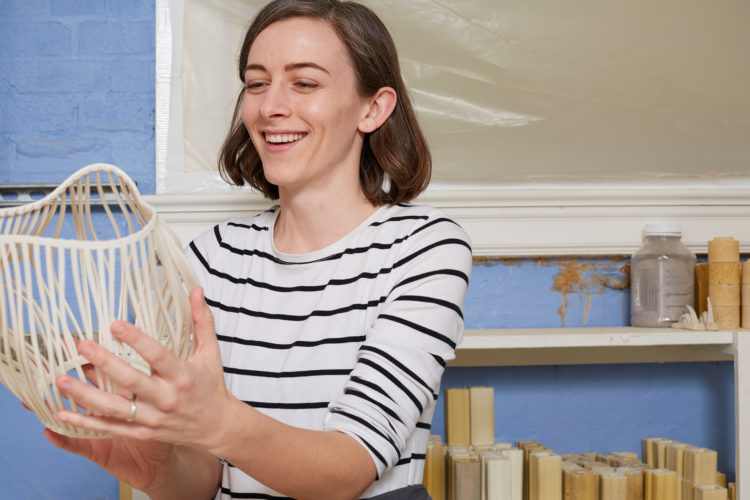
"I could see something in what I was doing – and when one vessel broke open and became bulbous in the firing, it triggered my imagination."Lauren Nauman
